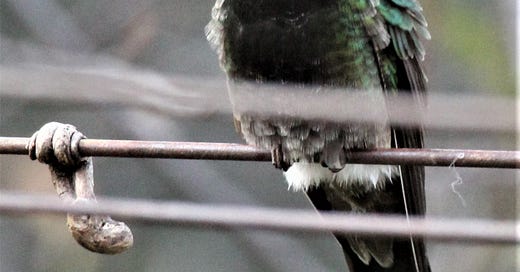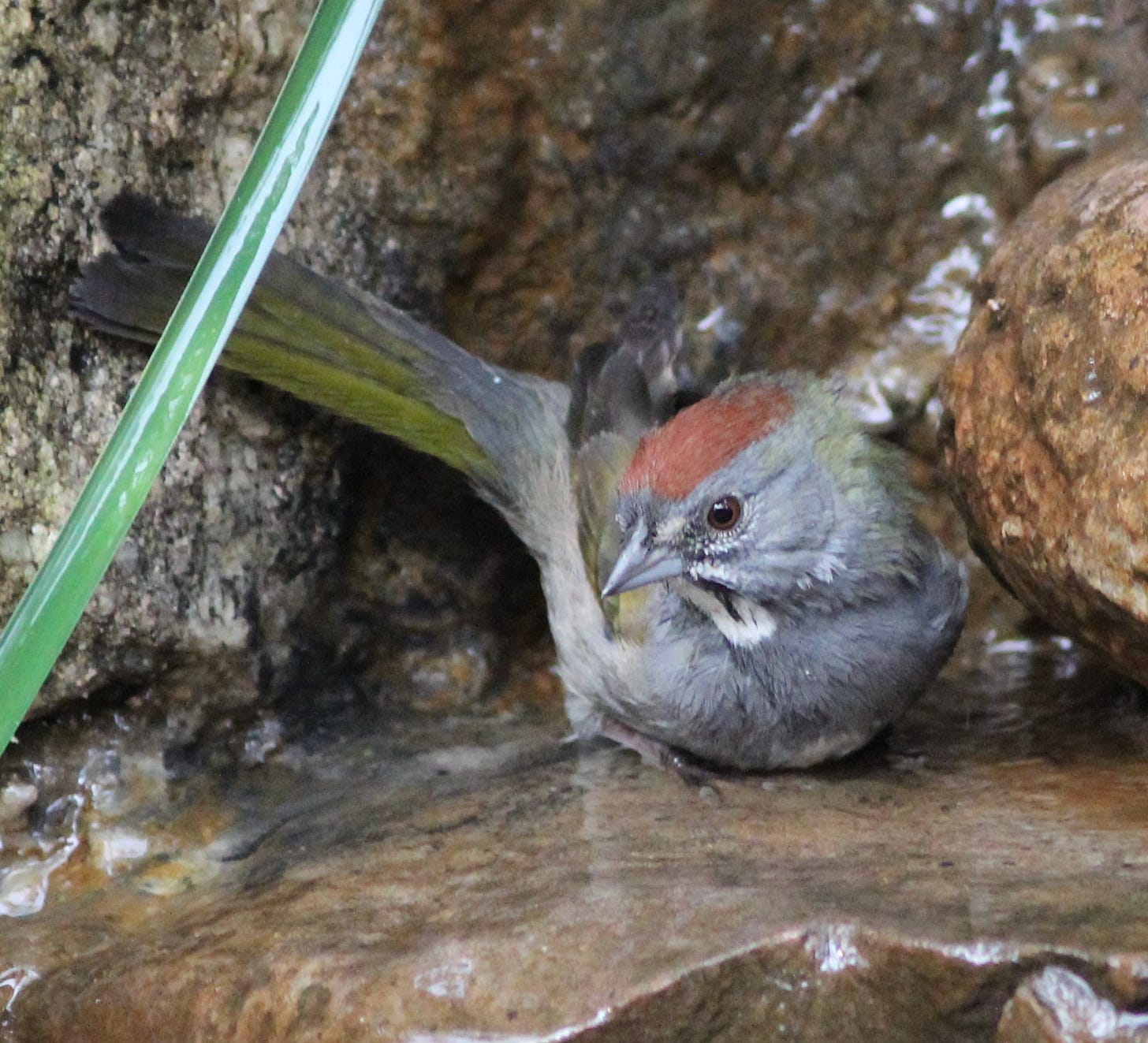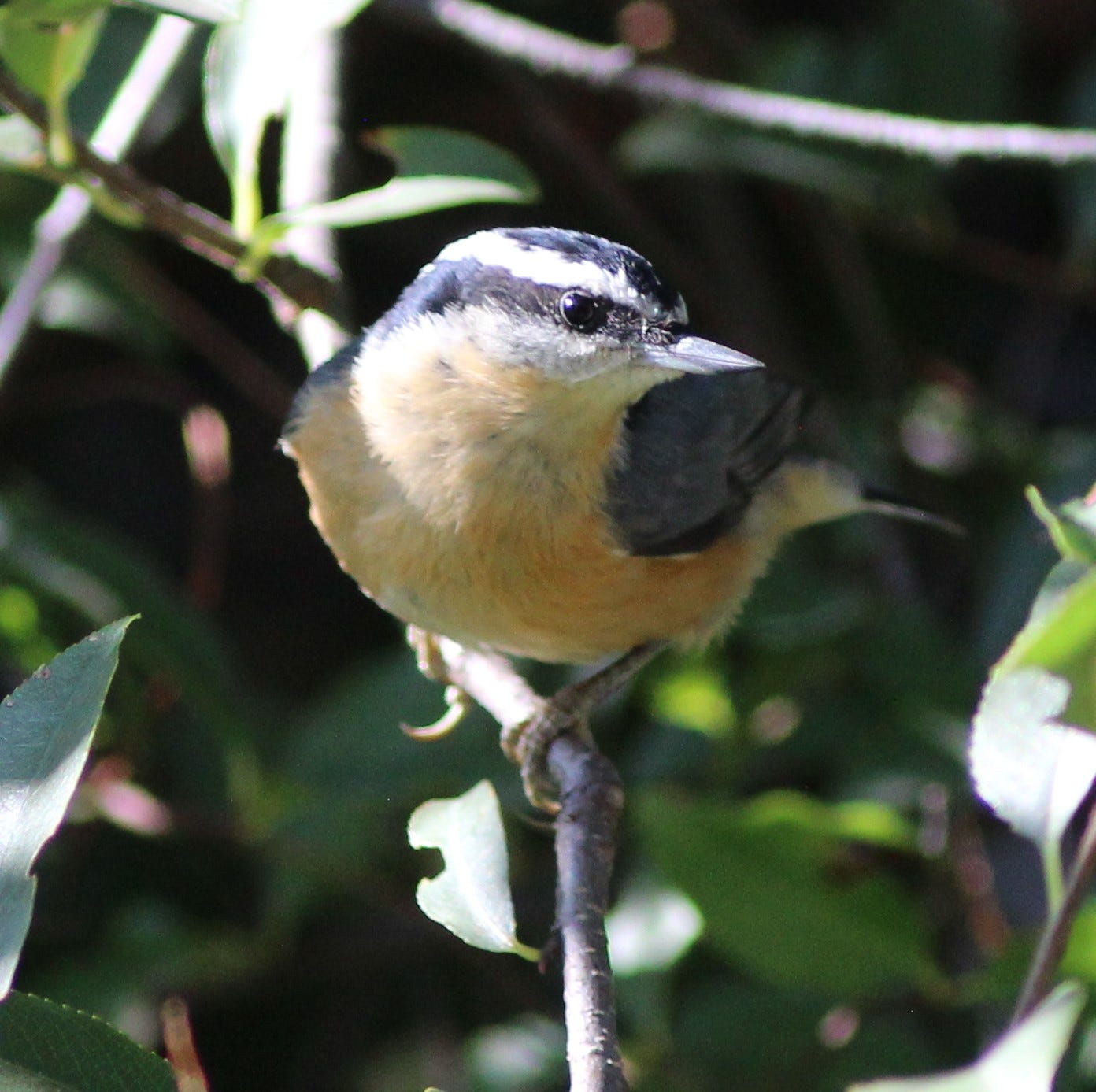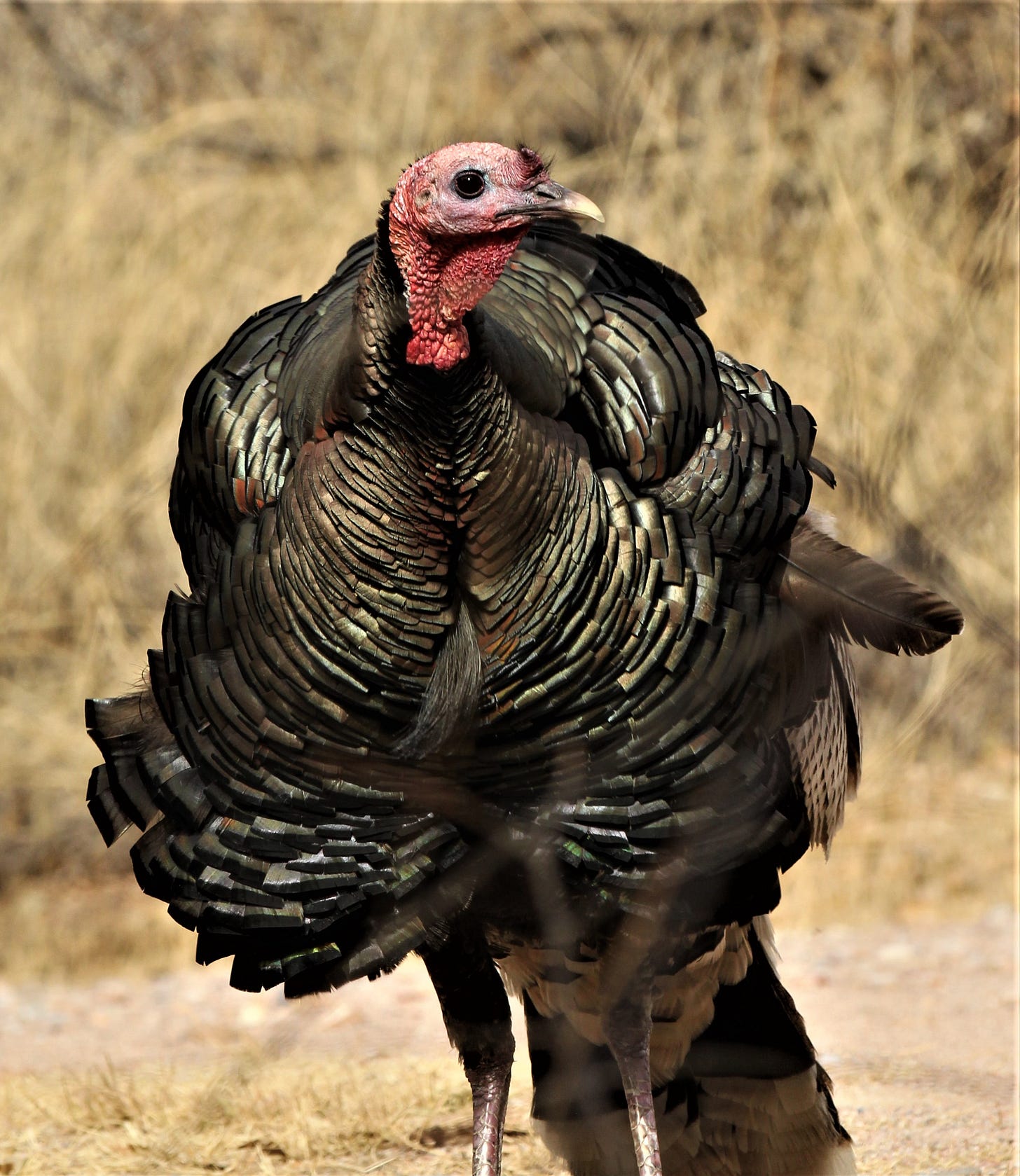January 17, 2022
Currently, the Big Yard is frozen. With today’s magnificent hummingbird and flock wild turkeys, only 39 species so far for 2022. Where are the pine siskins? The rosy pink and crisply streaked Cassin’s finches? The rufous-crowned sparrows and green-tailed juncos? Where is my favorite yard bird—my lone red-breasted nuthatch?
All no shows...very well.
In the two years since the start of the Pandemic when I began writing these posts, birdwatching has become less of a numbers game for me. In 2020, I chased birds, combing through online rare bird reports for the county and state and driving hundreds of miles to see magical wonders like crescent-chested warblers and eared quetzals. I went full “lister” (the term birders use for those who chase), checking off 303 species by the end of the year.
But I also began having reservations. I evolved from an unapologetic lister to an impenitent one. Then to a guilt-ridden, greenhouse-gas lister. And finally, deciding to back away from filling my tank with climate-change fluid and instead count birds in my own yard, to a “pajama lister.” (See posts from May 17, 2020, to June 17, 2020.)
And, except for an occasional side trip for birds during my regular travels, that’s where I remain today. Although I’m not saying something like a yellow grosbeak won’t lure me out. I can always plant more trees.
I’ve just read how Tiffany Kersten, a birdwatcher from the Rio Grande Valley in West Texas, set a new high for a “Big Year.” In 2021, she broke the American Birding Association’s record for the most bird identifications in the contiguous 48 states in a calendar year: 726 species. (Jeremy Dominguez held the previous high of 724 for 2020.) An astounding feat that put 49,000 miles on her purple Chevy Spark and had her jetting across the country at least once a week.
And she is just one of thousands of avid listers, birders like me attempting to count the most species in the county or the state or the lower 48 or North America or even the world. All of us checking off the next rarity at a cost so much greater than same-day plane tickets, hours in security lines, rental cars, hotels and meals.
Tiffany’s carbon footprint, according to carbonfootprint.com, for only the miles she drove—49,000—contributed 13.04 metric tons of CO2 to an already warming planet. Small change when you compare it to the 40 billion tons humans produce every year, greenhouse gases I’m just as complicit in generating. In 2012, when I drove all over the state while researching my book, Chasing Arizona, the odometer in my Kia Rio ticked off 20,000 miles by the end of the year, equal to 5.57 metric tons of CO2. (The carbon calculator comes with convenient ways to contribute to offset your CO2 emissions, from planting trees to supporting clean energy generation in developing countries.)
As I’ve mentioned previously, the National Audubon Society says that two-thirds of North America’s birds face extinction from rising temperatures—nearly 400 species—as climate change drives mismatches in food availability for migrating birds. (See: https://www.audubon.org/climate/survivalbydegrees)
There is a cost. To birds. For listing birds.
But we don’t talk about Listers, no, no no….








I am getting anywhere from 1-6 Pine Siskins, very low for the winter and have several Green-tailed Towhees but totally missing Rufous-crowned Sparrows which are usually common throughout the year. I never get nuthatches (well, only once) and have seen no Cassin's Finches or juncos either. It's a strange winter. Am trying to be more aware of my carbon footprint and can't see why I should drive many miles to see 'rare' birds that I've seen before just because they are here. It's bad enough that I have to make a 45mile round trip just to go to Benson for groceries. We are thinking about moving......
It sounds like we have very similar weather at the moment. I don't think I've ever been one for chasing "ticks" and as a consequence my list are relatively short. That's not to say I don't get a kick out of something new appearing in my garden or something that appears infrequently and I haven't seen for a few years, but I get just as much pleasure from seeing something that I see everyday. At the moment there is a robin (a different bird to your robin) that sits in my hawthorn tree every morning singing and there are at least two others I can hear in the distance responding. It's that time of year when breeding territories are important to that little bird and the byproduct is I get to listen to some of the best singing in town.